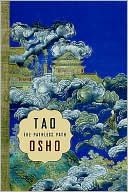Category Books
- Fiction Books & Literature
- Graphic Novels
- Horror
- Mystery & Crime
- Poetry
- Romance Books
- Science Fiction & Fantasy
- Thrillers
- Westerns
- Ages 0-2
- Ages 3-5
- Ages 6-8
- Ages 9-12
- Teens
- Children's Books
- African Americans
- Antiques & Collectibles
- Art, Architecture & Photography
- Bibles & Bible Studies
- Biography
- Business Books
- Christianity
- Computer Books & Technology Books
- Cookbooks, Food & Wine
- Crafts & Hobbies Books
- Education & Teaching
- Engineering
- Entertainment
- Foreign Languages
- Game Books
- Gay & Lesbian
- Health Books, Diet & Fitness Books
- History
- Home & Garden
- Humor Books
- Judaism & Judaica
- Law
- Medical Books
- New Age & Spirituality
- Nonfiction
- Parenting & Family
- Pets
- Philosophy
- Political Books & Current Events Books
- Psychology & Psychotherapy
- Reference
- Religion Books
- Science & Nature
- Self Improvement
- Sex & Relationships
- Social Sciences
- Sports & Adventure
- Study Guides & Test Prep
- Travel
- True Crime
- Weddings
- Women's Studies
Tao: The Pathless Path » (REV)

Authors: Osho
ISBN-13: 9781580632256, ISBN-10: 1580632254
Format: Paperback
Publisher: St. Martin's Press
Date Published: February 2002
Edition: REV
Author Biography: Osho
Osho is one of the best-known and most provacative spiritual teacher of the twentieth century. Beginning in the 1970s he captured the attention of young people from the West who wanted to experience meditation and transformation. More than a decade after this death in 1990, the influence of his teachings continues to expand, reaching seekers of all ages in virtually every country of the world.
Book Synopsis
In his commentaries on five parables from the Leih Tzu, Osho brings a fresh and contemporary interpretation to the ancient wisdom of Tao. Leih Tzu was a well-known Taoist master in the fourth century B.C., and his sly critiques of a Confucius provide abundant opportunities for the reader to explore the contrasts between the rational and irrational, the male and female, the structured and the spontaneous.
"Who Is Really Happy" uses the discovery of a human skull on the roadside to probe into the question of immortality and how misery arises out of the existence of the ego.
"A Man Who Knows How to Console Himself" looks beneath the apparent cheerfulness of a wandering monk and asks if there is really a happiness that endures through life's ups and downs.
"No Regrets" is a parable about the difference between the knowledge that is gathered from the outside and the "knowing" that arises from within.
"No Rest for the Living" uses a dialogue between a despondent seeker and his master to reveal the limits of philosophy and the crippling consequences of living for the sake of some future goal.
"Best Be Still, Best Be Empty" discusses the difference between the path of the will, the via affirmitiva of Christianity, Judaism, and Islam, versus the path of the mystic, the via negativa of Buddha and Lao Tzu.
A Q&A section addresses how Taoist understanding applies to everyday life in concrete, practical terms.
Table of Contents
| Introduction | vii | |
| 1. | Who is Truly Happy? | 1 |
| 2. | A Man Who Knows How to Console Himself | 30 |
| 3. | No Regrets | 59 |
| 4. | No Rest for the Living | 91 |
| 5. | Best be Still, Best be Empty | 123 |
| 6. | Following Torah, Open to Tao: Responses to Questions | 150 |
Subjects
 All Religion
All Religion  General & Miscellaneous Religion
General & Miscellaneous ReligionNonfiction
 Philosophy
Philosophy  Asian Philosophy
Asian PhilosophyNonfiction
 All Nonfiction
All Nonfiction  Asian Philosophy
Asian PhilosophyPhilosophy
 Asian Philosophy
Asian Philosophy  Taoism
TaoismReligion Books
 All Religion
All Religion  General & Miscellaneous Religion
General & Miscellaneous ReligionChristianity
 Christianity
Christianity  All Religion
All ReligionNonfiction
 Religion
Religion  All Religion
All ReligionReligion Books
 Christianity
Christianity  All Religion
All Religion
